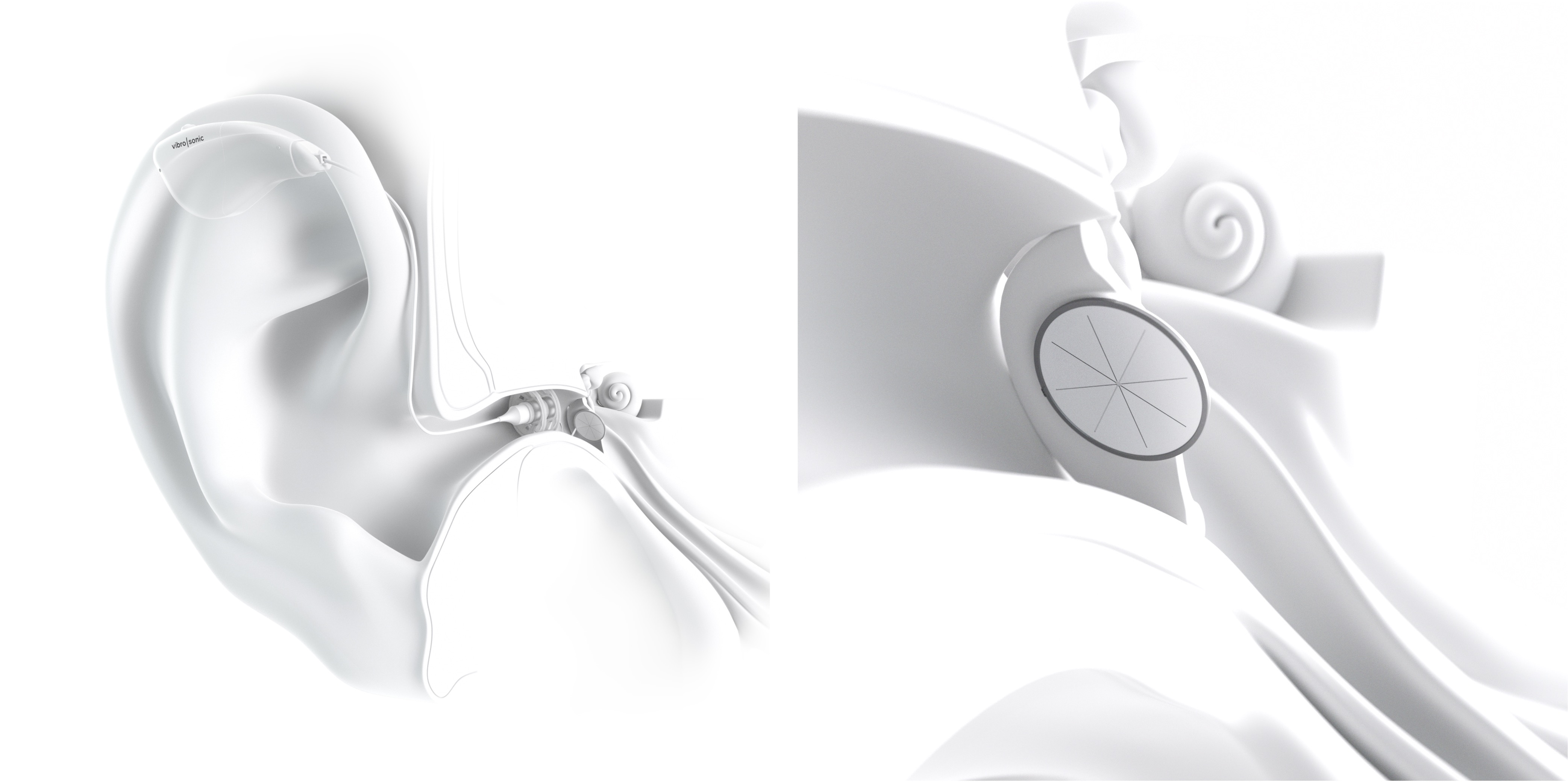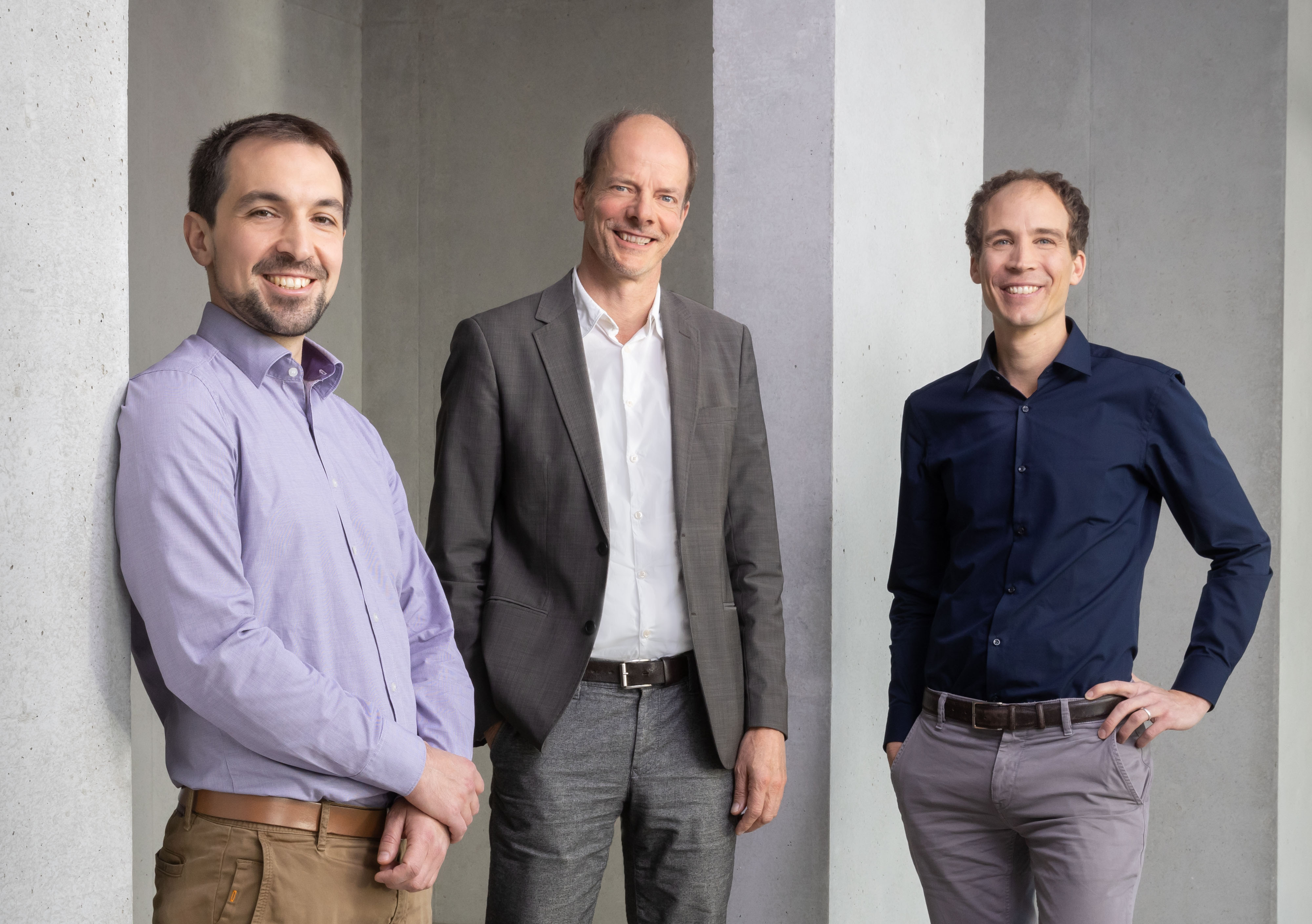Hearing loss
Innovative micro loudspeaker brings back hearing
Hearing loss often severely restricts the lives of those affected and can only be partially reversed with conventional hearing aids. The innovative hearing aid developed by Vibrosonic GmbH from Mannheim transmits sound vibrations directly to the eardrum and can thus almost completely restore the natural hearing experience.
Hearing is the acoustic perception of sound and takes place in mammals with the help of the ear. Hearing not only allows us to perceive speech and environmental noise, it also helps us to orientate ourselves in space. Our ear never sleeps, so we are aware of approaching dangers at an early stage. If hearing is damaged, for example, by noise, illness or ageing processes, this can impair the communication of those affected with their environment to such an extent that they withdraw completely. In addition, the risk of accidents increases due to the reduced ability to orientate oneself. Common hearing aids can provide good relief, but they are susceptible to noise and have significant limitations in amplifying very high and very low tones. Vibrosonic GmbH from Mannheim uses an innovative technology which results in an almost natural sound quality.
The human ear consists of three areas: the outer ear includes all visible parts and the external auditory canal up to the eardrum. The middle ear includes the tympanic cavity with the auditory ossicles (hammer, anvil and stirrup), the connection to the nasopharynx known as the Eustachian tube and the membranes of the round and oval windows which form the boundary to the inner ear. This is where the cochlea, the actual organ of hearing, is located. The sound waves picked up by the auricle pass through the auditory canal to the eardrum, which starts to vibrate. These vibrations are amplified in the middle ear and passed on to the cochlea via the membrane of the oval window. In the cochlea, the sound waves are converted into electrical impulses which then reach the brain via the auditory nerve.
The hearing contact lens® is worn directly on the eardrum
 The Vibrosonic® alpha hearing solution consists of a lens-shaped micro loudspeaker embedded in a silicone mould which rests on the eardrum (enlarged view on the right), the ear canal module firmly connected via a cable and the BTE unit is connected via a magnetic plug. © Vibrosonic GmbH
The Vibrosonic® alpha hearing solution consists of a lens-shaped micro loudspeaker embedded in a silicone mould which rests on the eardrum (enlarged view on the right), the ear canal module firmly connected via a cable and the BTE unit is connected via a magnetic plug. © Vibrosonic GmbHConventional hearing aids contain a microphone that sits either behind the ear (BTE device, open fitting) or at the entrance to the ear canal (ITE device, closed fitting), as well as a small loudspeaker that is located in the auditory canal. However, since there will always be a small hollow space between the loudspeaker and the eardrum, acoustic distortions can occur that impair sound quality.
With Vibrosonic’s hearing solution, on the other hand, the loudspeaker, known as the hearing contact lens®, is worn directly on the eardrum. The hearing contact lens® is a piezoelectric actuator that converts electrical signals into membrane vibrations. "Through direct mechanical coupling, we can generate sound where natural hearing takes place, i.e. directly on the eardrum, and as a result can guarantee better sound quality and also a broader frequency range," explains Dr. Dominik Kaltenbacher, co-founder and CEO of Vibrosonic GmbH, in a podcast.1) The innovative hearing aid is capable of amplifying sounds in the frequency range from below 80 Hz to well above 12 kHz, which corresponds to almost the complete audible frequency spectrum. Compared to conventional systems, whose frequency range is significantly smaller, the hearing contact lens® dramatically improves hearing. For example, the user is able to hear low tones which are important for being able to enjoy the rich sound of music, and also the high tones which make up many aspects of human communication.
Successful Fraunhofer spin-off
The membrane technology used for the hearing aid was developed by Dr. Dominik Kaltenbacher and Dr. Jonathan Schächtele at the Fraunhofer Institute for Manufacturing Engineering and Automation (IPA) in Mannheim together with Dr. Ernst Dahlhoff from the Department of Otolaryngology at Tübingen University Hospital and was originally intended for implantable hearing solutions. After realising the similarity to the human eardrum, the three engineers designed the innovative actuator and founded Vibrosonic GmbH in 2016 with the support of Fraunhofer Venture. The Vibrosonic alpha® hearing aid, which was CE-certified in May 2021, is suitable for people with mild to moderate hearing loss. It consists of a total of three components: the special micro loudspeaker in the form of the hearing contact lens®, an auditory canal module and a behind-the-ear module, which houses the microphone as well as the signal processing technology and battery.
 The three engineers Dr. Jonathan Schächtele, Dr. Ernst Dahlhoff and Dr. Dominik Kaltenbacher (from left to right) jointly developed the novel hearing contact lens® and founded Vibrosonic GmbH. © Vibrosonic GmbH
The three engineers Dr. Jonathan Schächtele, Dr. Ernst Dahlhoff and Dr. Dominik Kaltenbacher (from left to right) jointly developed the novel hearing contact lens® and founded Vibrosonic GmbH. © Vibrosonic GmbHIn order to achieve an optimal improvement in hearing performance, the hearing contact lens® has to be manufactured for each patient individually. The eardrum is scanned and a matching silicone mould in which the actuator is embedded is manufactured. Trained ENT doctors subsequently insert and adjust the hearing system for the user. The auditory canal module, which is firmly connected to a cable, is also inserted into the auditory canal. The auditory canal module is a magnetic connector to which the electronic unit behind the ear is connected. The lens is designed so that it adheres to the eardrum by way of adhesive forces and the auditory canal only needs to be closed by an earplug when swimming or bathing.
Vibrosonic’s hearing aid is, however, not suitable for people who frequently suffer from middle ear infections or whose auditory canal has an unusual shape. The same applies to people who regularly have to undergo magnetic resonance imaging (MRI), as the speaker would have to be removed by a doctor before each examination.
Miniaturised technology as a goal
Vibrosonic alpha® is primarily a demonstrator model that is being used to identify and develop opportunities to market the hearing system. As part of a PMCF (post-market clinical follow-up) study in cooperation with the University Hospitals of Mannheim and Tübingen, this model has been tested by 20 volunteers since the beginning of 2022 in order to demonstrate its quality and to examine its handling and tolerability. At the same time, a care network of certified ENT physicians and audiologists is being established. However, the focus of the young company is on a next generation model known as Vibrosonic one®. Here, the actuator will be connected to a miniaturised electronic unit so that the complete hearing aid can be worn inside the auditory canal. "Vibrosonic one® combines the two features that are incompatible with conventional hearing aid technology: on the one hand, this involves the superior sound quality of the hearing aid lens® and, at the same time, an electronic module that is invisible from the outside," reports Kaltenbacher enthusiastically. Kaltenbacher and his colleagues plan to introduce the innovative product to the market in 2024 and expect it to be subsidised by health insurance companies.